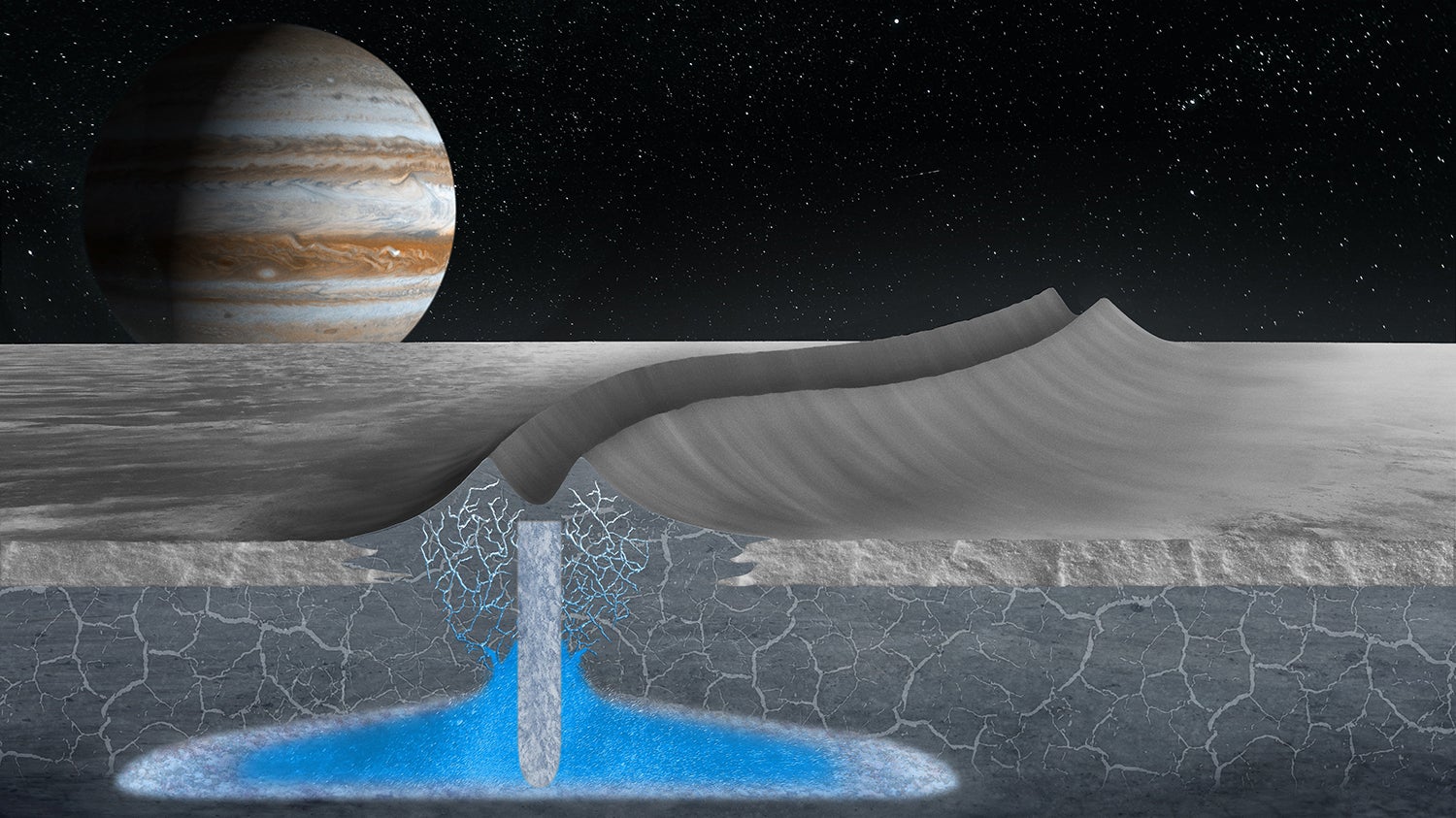Jupiter’s moon Europa could have water near surface
Jupiter’s moon Europa, like Saturn’s moon Enceladus, is an important target for the search for extraterrestrial life. That a liquid, salty ocean exists beneath its ice crust seems clear since the visits of Voyager and Galileo. But to explore this body of water, visitors must first drill through at least 20 to 30 kilometers of ice. Or maybe not? At least that’s what a new study based on data from the Greenland Ice Sheet, published in Nature Communications, suggests. The results could provide insights into the geophysical processes that led to the formation of Jupiter’s moon.
Riley Culberg, a doctoral student in electrical engineering at Stanford, and colleagues studied a surface shape called a double ridge. These are nearly symmetrical elevations about 300 meters high, with a shallow valley about 800 meters wide between them. They can be hundreds of kilometers long and occur in every sector of Europe. The authors identified a similar double ridge in the ice sheet in northwestern Greenland with the same geometry as on Europa. To explore the formation of the ridge in Greenland, they used elevation and radar sounding data and suggest that it was formed by a sequence of refreezing, pressure buildup, and rupture of a shallow water sill within the ice sheet. The authors suggest that if this process is also responsible for the formation of the double ridges on Europa, this could indicate that liquid water is present in the moon’s icy shell.
“Because these deposits of liquid water are closer to the surface, where they come into contact with interesting chemicals from space, from other moons, and from Io’s volcanoes, there is a possibility that life has an even better chance,” said the study’s lead author, Dustin Schroeder, associate professor of geophysics at Stanford University’s School of Earth, Energy & Environmental Sciences. “If the mechanism we’re seeing in Greenland is also playing out in Europe, that suggests there are pockets of water like this all over the moon.”
“Researchers have been studying these double ridges for more than 20 years, but this is the first time we’ve observed something similar on Earth and seen nature work its magic,” said study co-author Gregor Steinbrügge, a planetary scientist at NASA’s Jet Propulsion Laboratory (JPL). With the right instruments, probes could now actively search for such water pockets and quickly detect them. If the researchers are right, as they admit, “We’re just another hypothesis among many others – we just have the advantage that our hypothesis is supported by observations of the formation of a similar feature on Earth,” Culberg said.

